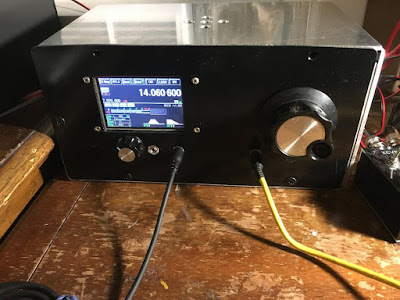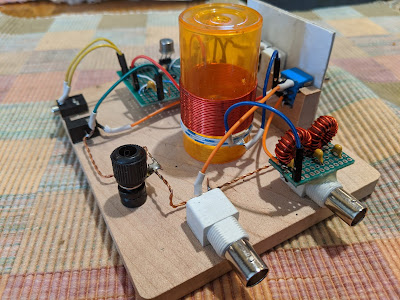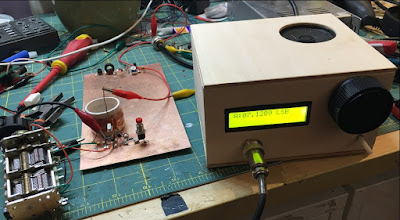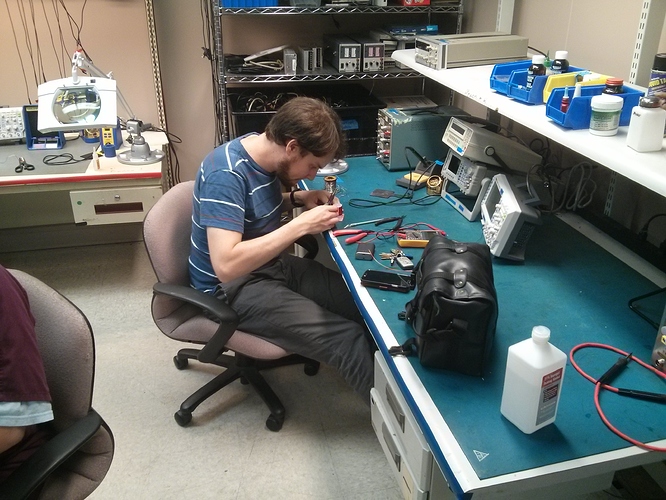Bill and Pete,
Thanks for the work you put into your podcast. I’ve been listening to it on my commute and while at work (I’m a welder/fabricator). Fantastic content. Keep up the great work.
All your talk about Farhan and the Ubitx convinced me to order one. I welded an aluminum case for it and upgraded to the Nextion 3.5” screen. Also added a tuning knob from a Heathkit SB-401. So far I’m really enjoying this rig. Plan to add an audio amp (to drive a larger speaker) and a CW filter to it this weekend. In the station picture I sent I also show my paddles made from a hacksaw blade and stainless steel hardware. It’ll send 25 WPM before it gets a little sloppy. My QCX 40 is also pictured. I have a commercial rig too but find I’m not using it very often.
Plan to start building the simpleceiver soon and maybe a bitx 17 too. Your podcast played a big part in convincing me to pick up a soldering iron again. You guys are awesome. Keep it up.
73’s
Adam
N0ZIB
(Pete noticed that the main tuning knob on Adam's uBITX was NOT from Heathkit but was instead from a Collins KWM-2 or 32S3. He advised Adam that the knob would sell quickly on e-bay. It did, and will finance additional N0ZIB homebrew projects. We are thinking of adding these knobs to our SolderSmoke Retirement Fund Portfolio.)
Adam continues:
I was listening to your older podcasts and heard several discussions about the Michigan Mighty Mite. So this jumbled up mess probably doesn’t look like much but I built one. I need to order a 40 meter crystal and actually build it again on a board(with the coil rewound for 40) but my “proof of concept” build was a success. Using a variable cap from a Hallicrafters S20-R and the crystal holder from a Heathkit.

























































